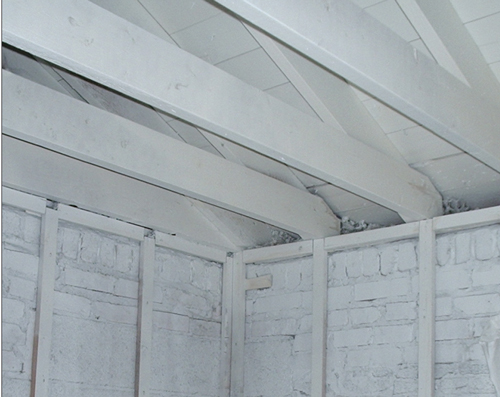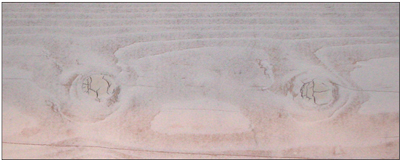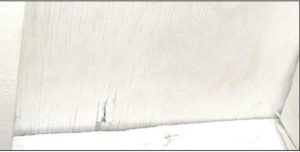What to expect during and after the application of Mold Resistant Coatings
Foster® Coatings — effective against mold
Every step in the mold remediation plan is essential. However, the application of a mold resistant coating with mold-inhibitors or antimicrobial additives will fend off further growth of mold, mildew and odor-causing bacteria on the coating’s surface . . . long term.
Here is what to expect with the Foster® mold resistant coatings:
Long-term protective coatings that breathe
- Coatings contain EPA registered mold-inhibitors and anti-microbial additives which
prevent the re-growth of odor-causing bacteria, mold and mildew on the coatings
surface. - Formulated for long term performance
- Breathable coatings allow damp materials to continue to dry even after coating application.
- Ideal products for use on water damage restoration projects and in high humidity areas.
Water-based formulations
- Products are low-odor minimizing unpleasant smells during application.
- Low VOC (volatile organic compounds)
- Meets U.S. Green Building Council’s LEED® requirements:
- Indoor Environmental Quality, EQ 4.2 Low Emitting Paints and Coatings.
 Easy application with a nice, clean finish
Easy application with a nice, clean finish
- Applied in the same way as latex house paints
- Available in white and clear finishes.
To the right is a photo of properly remediated, dried ceiling rafters and brick walls cleaned with First Defense™ Disinfectant and then coated with a Foster® mold resistant coating.
What should I expect during and after application?
Application and dry time
An odor similar to latex house paints may be present until the coating is fully dried. The coating’s drying process typically takes a few days, but is contingent on factors, such as:
- Humidity levels: The lower the humidity, the quicker the drying process.
- Good ventilation: Good ventilation and dry air movement will promote the drying process. Wet, coated surfaces should never be covered with plastic, dry wall or finishes, as it will hinder the drying process.
- Equipment used: This might include air movers, negative air machines, fans and dehumidifiers.
The remediation contractor will evaluate site conditions and determine if additional equipment is needed to speed
up the drying process. Instructions will be provided to you regarding the location and operation of equipment, if
necessary.
Finished appearance
Natural
 Wood knots and the wood’s grain, color, and porosity may have noticeable variations in the coating’s appearance when
Wood knots and the wood’s grain, color, and porosity may have noticeable variations in the coating’s appearance when
applied. Note: the two images to the right illustrate how knots and porous areas may show through at the proper coverage.
However, this is normal and does not affect the coating’s resistance to mold growth. Per ASTM D5590 Testing*, the tested areas show no mold growth where the coating appears lighter do to variations in the wood.

Pre-existing stains and markings
Pre-existing stains and markings that may show will also not affect the coating’s mold resistance.
 A more aesthetic appearance
A more aesthetic appearance
For a more aesthetic appearance, the following may be done:
- The coating can be brushed out after spraying for a more even appearance
- To block existing water marks, stains, and wood tannins from showing through, a high quality stain blocking primer may be applied under the Foster® coatings.
Warranty
Foster® coatings come with a Limited Warranty for mold protection. Please consult the appropriate limited warranty
sheet for warranty period and terms.

